Table of Contents
Water in Granada
Water in Granada has been linked to the origin of life since the Nasrid period.
In fact, not only the Arabs, but all civilisations since prehistoric times have recorded the significance of water and its symbolism and beliefs.
In the Islamic world there is a close connection between water and creation.
Water is considered the substance with which Allah created humankind and all creatures.
It even relates to death, since water was often considered a symbol of resurrection or rebirth.
In Al-Andalus times, it was said there were three most soothing sounds: the tinkling of coins, a beloved voice and the sound of water.
Through water comes healing, prosperity and fertility, hence the powerful meaning of water in Granada for Nazrid culture.
The power of Water in Granada
Due to the extreme aridity of the desert, Islamic culture has always placed the utmost importance on proper water management as nature’s most valuable resource.
Not surprisingly, for Arabs and Muslims, water was an essential natural element, symbol of reward afterlife, in the form of a river or spring, or as a garden.
Water is considered to reflect divine omnipotence responsible for turning a desert into a paradise by its presence alone, bestowed by the Creator.
In Islamic culture the lost paradise consists of a garden of nature that offers mankind all possible goods and endows water with sacred qualities.
The importance of water in Granada during the Nasrid period, moreover, had esthetical and scenic value, which is reflected in its magnificent buildings, such as the Alhambra in Granada.
Thus, in the palatine city, design and engineering came together to create poetic and aesthetic images, where architecture flows over mirrors of water, merging the celestial and terrestrial worlds.
Water aesthetic in the Alhambra
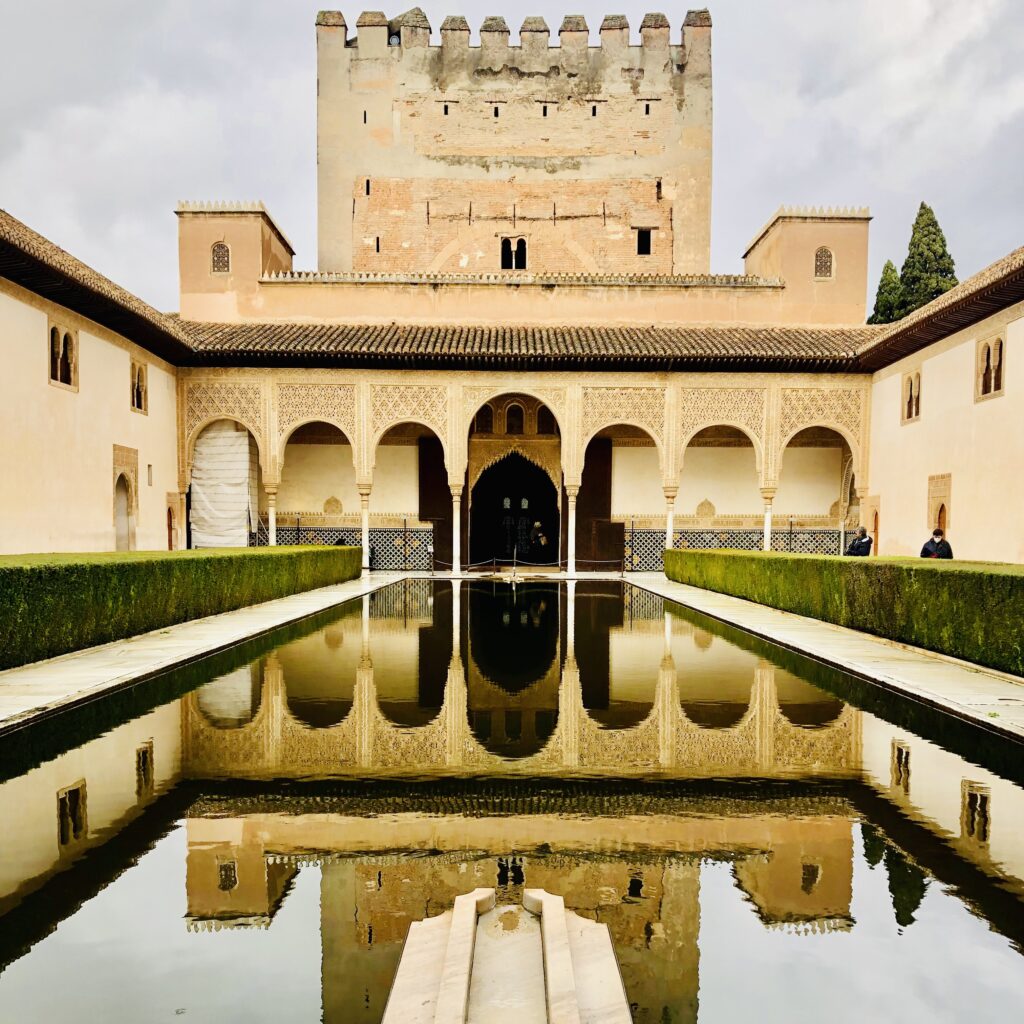
Water in the Alhambra blends indoor and outdoor environments.
Creating a spiritual fusion between architecture and nature, to realize Paradise as defined in the Koran.
The Comares Palace is the best example of the charm of water mirrors, where water finds the complicity of light, wind and rain to work its magic.
Firstly the size of the pond or “albirca” reflects the entire architecture, the imposing Comares Towers guardians of the Throne Room; the ultimate sultan’s majesty symbol.
Secondly, the relaxing sound of water, present in almost every Nasrid construction, adds a refreshing touch, while evoking the tranquility of streams, waterfalls, rivers and the sea.
Water in Granada transforms each space into a paradisiacal spot which enlivens the senses and instills wellbeing.
Health and Water in Granada
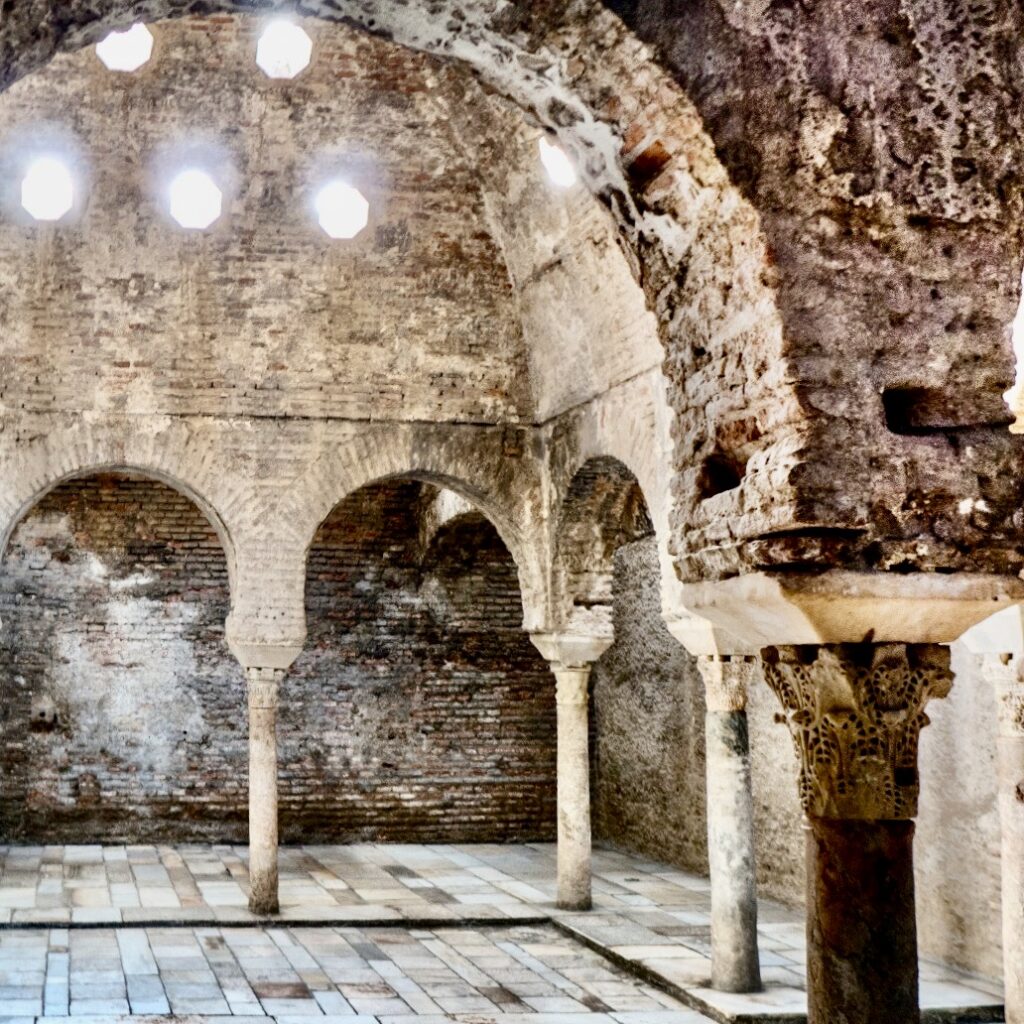
Granada is by far one of the Spanish cities most influenced by Moorish culture.
In fact, the architecture of its monuments and traditions are still present in every corner of this magnificent city.
A perfect example are the Arab baths or Hammams, handed down by the Muslims from the Roman baths.
For the Muslim religion, the ritual of the complete washing of the body (major ablutions) is an important tradition, thus the hammams spread rapidly throughout al-Andalus.
Renewal and rebirth through water is achieved as a result of healing immersion.
There were 21 hammams in Granada and it is not surprising that today it is the city in Spain with the oldest and best-preserved Arab baths.
Originally known as Aammim Alyawza (Baths of the Walnut Tree), the Bañuelo is a relic of Moorish Granada from the 11th century perfectly preserved.
Actually El Bañuelo is one of the few baths saved from the destruction of the Catholic Monarchs.
Finally, in 1918 they were declared a National Monument and, later on, were restored by the architect Torres Balbás.
Certainly the Romans were aware of the curative properties of water and contributed significant progress through their impressive civil engineering projects.
Yet it was certainly the Al-Andalus culture and, above all, the Nasrid Kingdom who perfected hydraulic techniques and managed to get the most out of the use of water in Granada.
The best use of Water in Granada
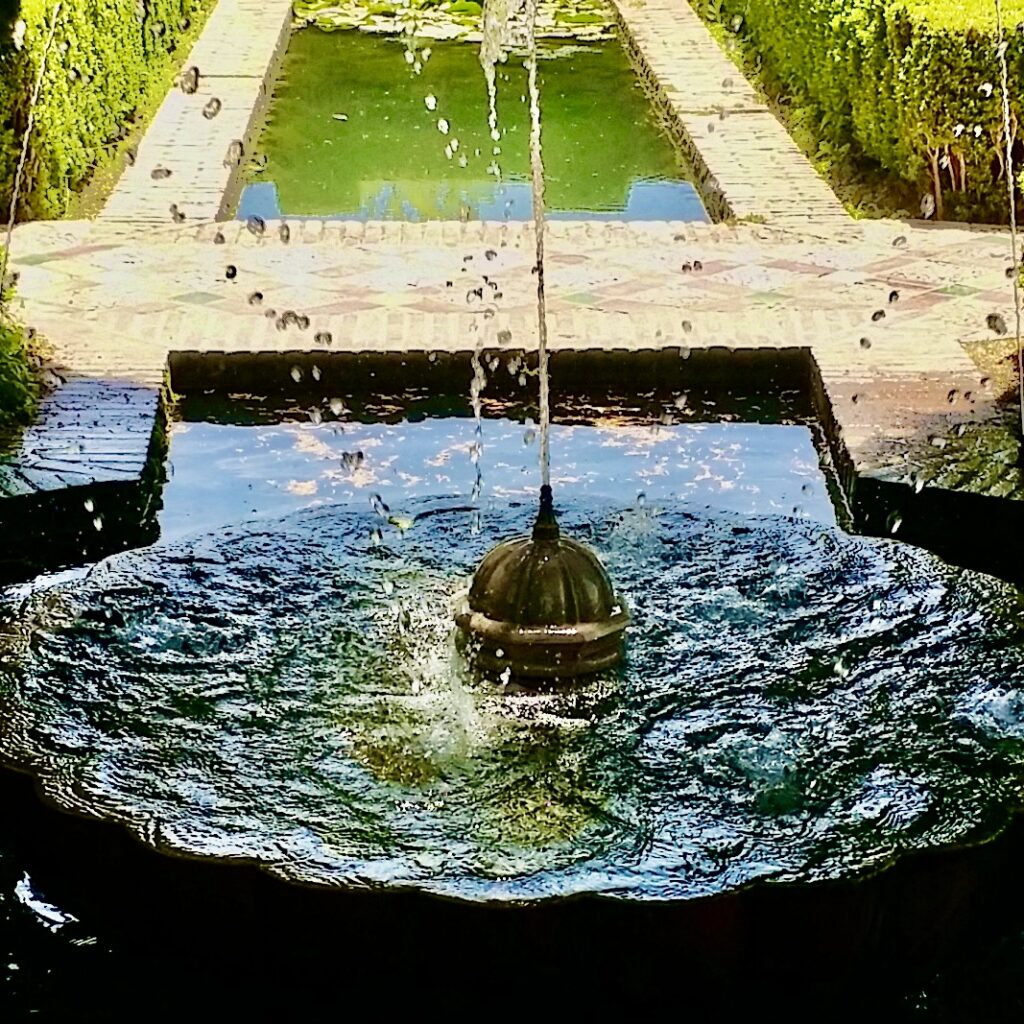
The rulers of al-Andalus were particularly concerned about water supply for the cities.
Therefore they mastered hydraulic techniques and knowledge, inherited from the Romans, which they brought to the Peninsula, most of which still continues to this day.
Some of their most outstanding examples are the following:
- Qanat, a mother well from which a sloping gallery is dug for the water to flow outwards. Noteworthy examples can be found in the Alhambra.
- Cigüeñal, (crankshaft) also called saduf, which is still used today in the Alpujarra for irrigation purposes on small plots of land.
- Norias de sangre,(waterwheel) used in dry-land areas to concentrate and divert water from the torrents to the crops.
- Zafariches or zahariches, from the Arabic sahriy, rafts with inlets and outlets for water, which can still be found today spread across rural areas.
- Acequia, ditch or channel whose purpose is to carry water by gravity for irrigation and other purposes, which in its traditional form is dug in earth or rock. From Arabic sa ̄ quiya.
- Aljibe, ( cistern) a brick or tiled structure used as a drinking water reservoir, fed by rainwater or external ditches.
Water in Granada, the Aljibes route
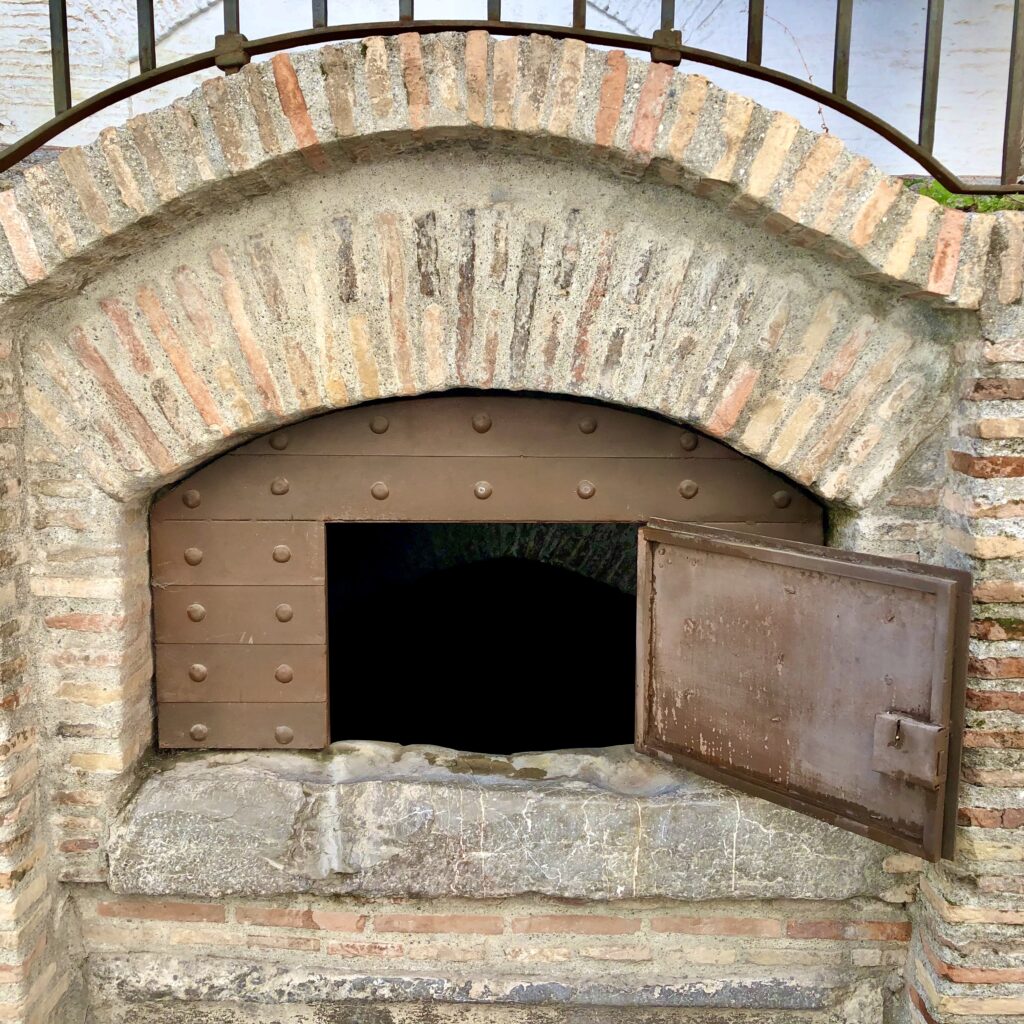
The inhabitants of Al-Andaluz hydraulic expertise and engineering achievements became a legacy that, still today, is reflected in words such as ‘alberca’, ‘acequia’, ‘aljibe’, ‘aljibe’…
And, proof of these magnificent constructions still can be found in El Albaicín.
In this historic and charming quarter of Granada, besides the Alhambra, we can find an element which defines and distinguishes it: the cisterns of the Albaicín.
Built during the Moorish domination of Granada, these structures served to store and supply water to the city.
It would never have been possible for the population to settle on the hill without these water cisterns.
The public aljibes remain to this day and are considered, alongside the Alhambra, to be one amongst the Albaicin most characteristic heritage elements.
Currently there are 27 water cisterns still in existence, including some well-known examples.
Firstly the Aljibe del Rey, with a capacity of over 300 m3, considered the largest of the Muslim cisterns in Granada.
Another interesting example is the Aljibe de San Cristóbal, accessible only by descending a staircase 6.30 m below street level.
Water in Granada has always been an essential element that has defined it aesthetically, socially and spiritually, and its influence is still visible throughout every corner and in every building.
Contact me and let’s discover together the exciting history of the water of Granada and its magical routes.
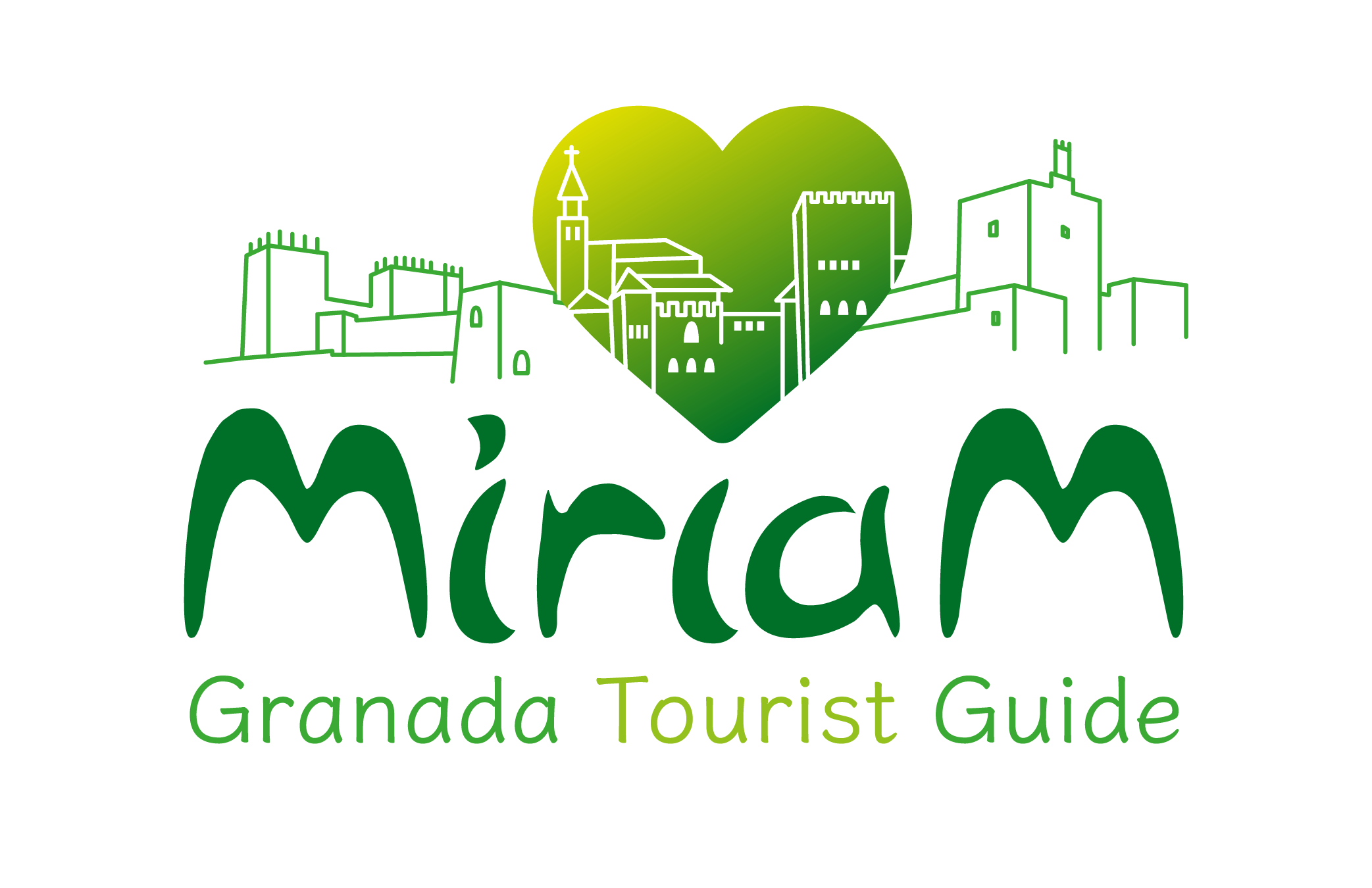

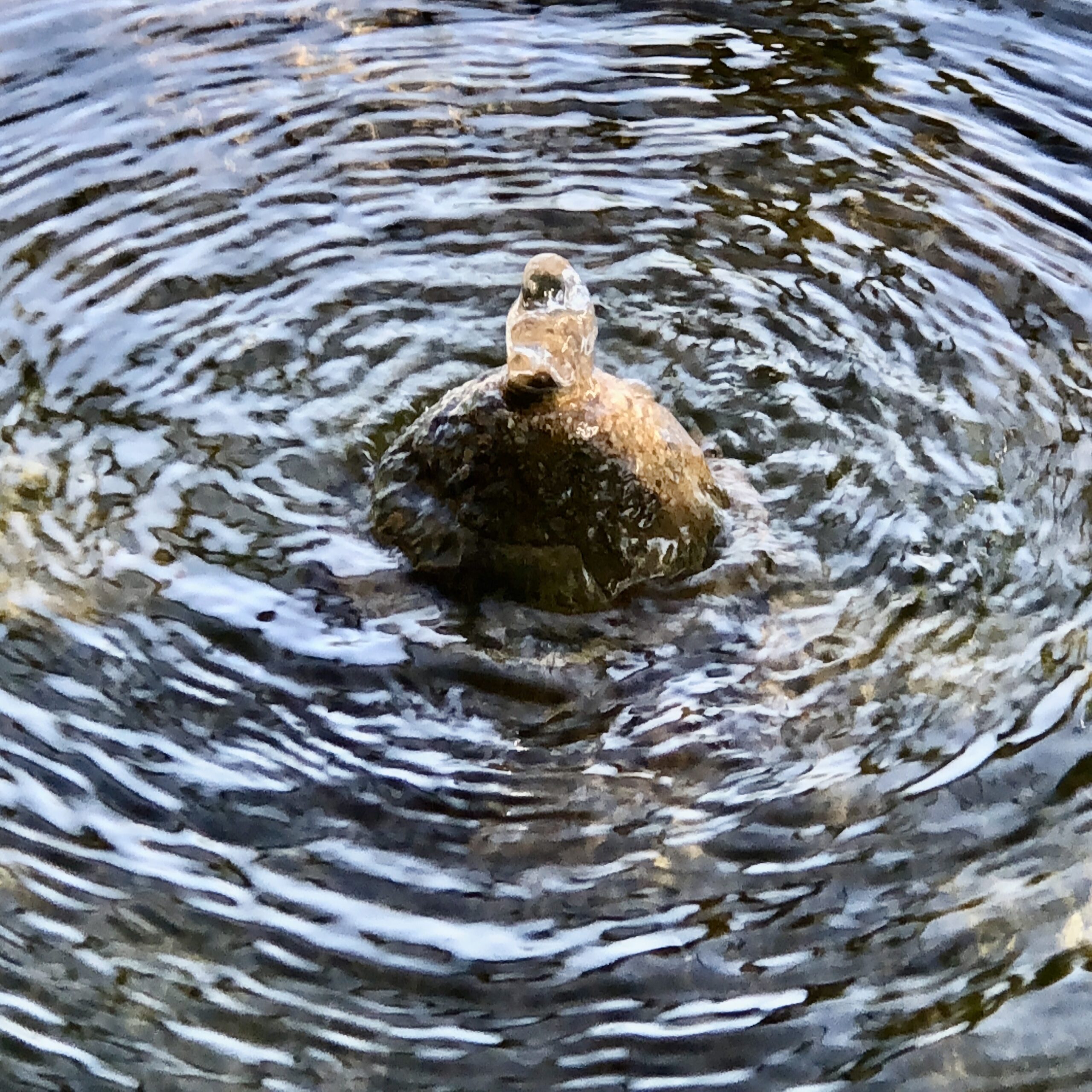

Comment (0)